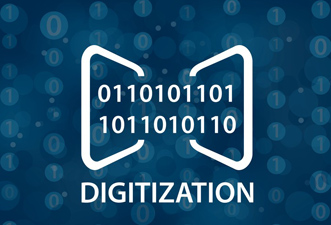 Have you ever considered the fact that an unexpected catastrophe like an electrical fire, a flood or crane accident could affect your business? Unfortunately, it could. Here, the important thing is to safeguard your most important documents and other assets no matter what happens. This can help business continuity with no hurdles.
Have you ever considered the fact that an unexpected catastrophe like an electrical fire, a flood or crane accident could affect your business? Unfortunately, it could. Here, the important thing is to safeguard your most important documents and other assets no matter what happens. This can help business continuity with no hurdles.
Digitization is creating digital surrogates of materials like books, newspapers, vinyl records, photographs, negatives, audio and so on preferably with the support of document scanning and conversion services. It helps to preserve the content of the materials by creating an accessible duplicate. Digitization services also include document conversion services, which help to convert any type of file into the required format.
Speaking of creating electronic substitutes of diverse materials, libraries and museums have also started taking up huge digitization initiatives to protect their valuable assets for posterity. For instance, consider initiatives like that launched by the Tennessee State Library Archivists (TSLA) titled “Over Here, Over There: Tennesseans in the First World War.” This project is a major effort of the TSLA to collect records of how World War I affected Tennesseans. Archivists are travelling around the state to digitally scan and photograph artifacts such as documents, maps, sketches, credentials, photos, uniforms, military records, posters, letters and so on that are associated with the war.
From their two day program, TSLA gathered almost 130+ artifacts and almost 300 or so images, which then took almost four to five months to edit the images, write the descriptions and upload the materials to their website. They could assemble valuable medallions, books, uniforms, discharge papers and so on.
Projects such as these are very significant because they bring to light valuable artifacts that may be lying around without anybody realizing their significance.
In such initiatives, document scanning and conversion plays an important part in digitizing the documents and converting them into the required format. Three-dimensional objects are first photographed and a digital version of the photograph is maintained. In this way, rare documents and artifacts can be made available to the public and interested researchers. At the same time, the originals can be safely preserved without frequent handling.
Museums and libraries may have scanning equipment of their own. However, if they don’t choose to invest in expensive high-end scanners and scanning professionals, the ideal solution is to obtain the service of a document scanning company that offers large volume scanning services.



